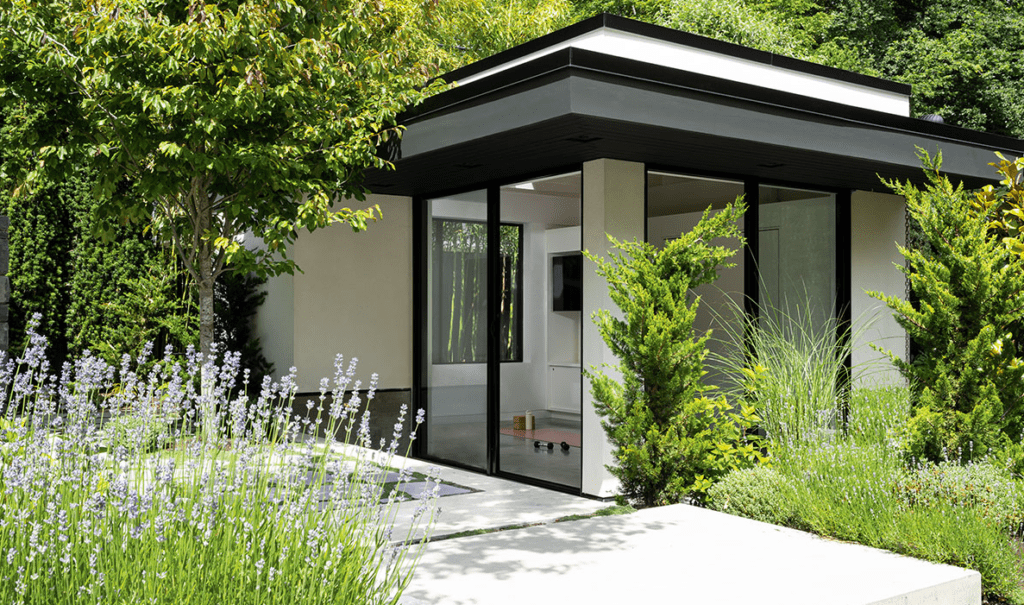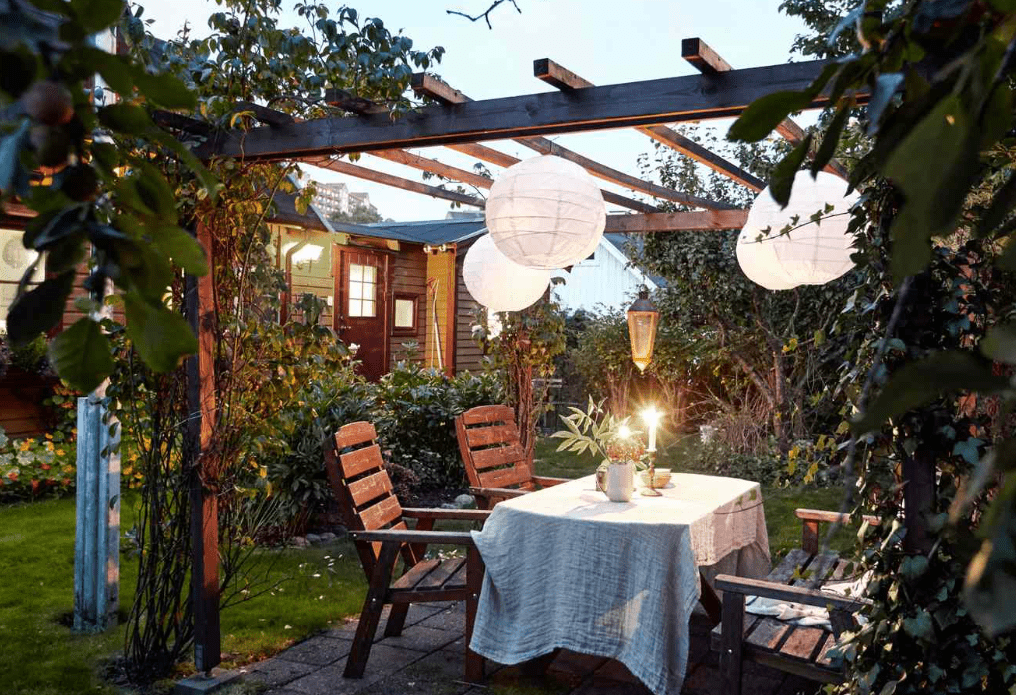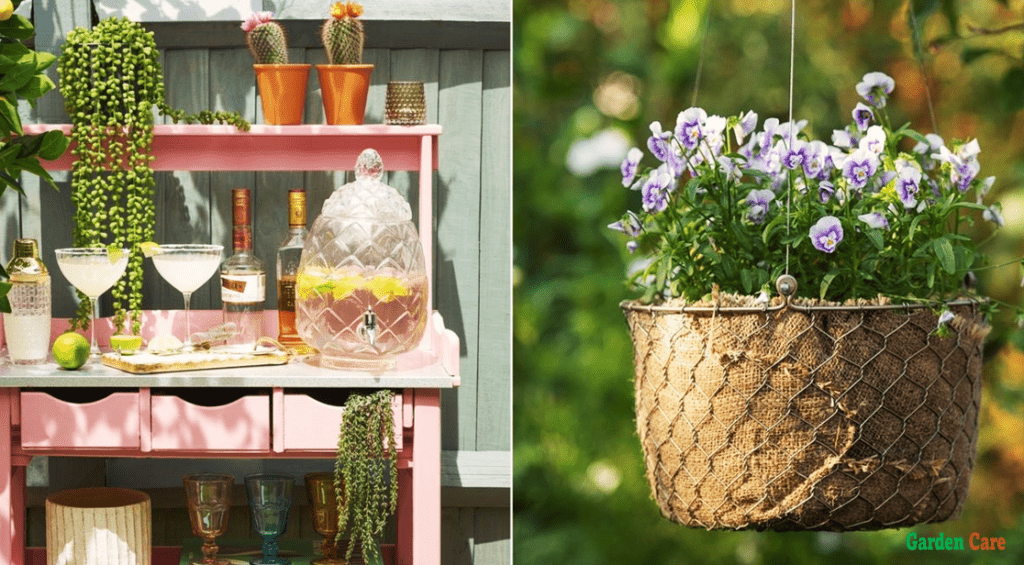Rain garden design ideas consist of incorporating natural elements like plants, stones, and simple drainage systems to manage and filter rainwater effectively. Rain gardens are not only functional but also aesthetically pleasing additions to any landscape design.
They help prevent runoff, reduce erosion, and improve water quality by allowing rainwater to soak into the ground slowly. By selecting native plants, implementing gentle slopes, and adding mulch, you can create a captivating rain garden that attracts wildlife, enhances biodiversity, and promotes sustainable gardening practices.
Whether you have a small or large space, there are various design options and techniques available to create a beautiful and eco-friendly rain garden that merges seamlessly with the surrounding landscape.
[ez-toc]

Planning And Preparation
When it comes to designing a rain garden, proper planning and preparation are essential to ensure its success. By following these steps, you can create a beautiful and functional rain garden that effectively manages stormwater runoff and enhances your outdoor space.
Choosing The Right Location
Before starting the design process, carefully consider the location of your rain garden. Look for an area of your yard that receives a good amount of rainfall and where water naturally collects or flows during a storm. This will ensure that your rain garden effectively captures and retains water, preventing it from causing erosion or flooding elsewhere on your property.
Additionally, pay attention to factors such as sun exposure and soil conditions in the chosen location. Most plants used in rain gardens prefer full sun, so try to select a spot that receives at least six hours of direct sunlight per day. As for soil, well-draining soil is crucial to prevent pooling and ensure the health of your plants. If your soil has poor drainage, consider amending it with organic matter or creating raised beds to improve water infiltration.
Calculating Drainage Area
Calculating the drainage area is an important step in rain garden design. This will determine the size and capacity of your rain garden, allowing it to efficiently manage stormwater runoff. To calculate the drainage area, determine the total square footage of the surfaces that will contribute water to your rain garden. This can include rooftops, driveways, walkways, and other impervious surfaces.
To simplify the calculation, measure the length and width of each impervious surface and multiply them to obtain the square footage. Add up the square footage of all surfaces to get the total drainage area. As a general rule, a rain garden should be about 10-30% the size of the total drainage area. This ensures that the rain garden can effectively handle the volume of water and allows for proper filtration and absorption by the plants and soil.
By carefully choosing the right location for your rain garden and accurately calculating the drainage area, you can lay a solid foundation for the design and construction process. With these considerations in mind, you can create a rain garden that not only benefits the environment but also enhances the aesthetic appeal of your outdoor space.

Designing The Rain Garden
Welcome to the exciting world of rain garden design! Designing a rain garden involves careful consideration of various factors to create a beautiful and functional space that effectively manages stormwater. In this article, we will explore some essential design ideas for your rain garden. Let’s dive in!
Selecting Native Plants
When selecting plants for your rain garden, it is crucial to opt for native species that are well-suited to your region and soil conditions. Native plants have evolved to thrive in local climates and require less maintenance once established. Additionally, they provide numerous benefits like attracting pollinators and creating habitat for wildlife.
Mix a variety of plants with different root structures, including grasses, perennial flowers, and shrubs. This diverse plant selection helps to improve water infiltration, prevent erosion, and filter pollutants effectively. Consider plants such as Blue Flag Iris (Iris versicolor), Cardinal Flower (Lobelia cardinalis), Joe-Pye Weed (Eutrochium purpureum), or Black-Eyed Susan (Rudbeckia hirta), which thrive in wet or moist conditions.
Creating The Ideal Shape
The shape of your rain garden plays a crucial role in its functionality. A rain garden should be designed as a shallow depression that collects and absorbs rainwater runoff efficiently. Aim for a depth of 4-8 inches, ensuring adequate drainage while still allowing water to infiltrate into the soil.
The size of your rain garden will depend on the available space and the amount of rainfall you typically receive. As a general rule of thumb, the rain garden should be about 3-4 times longer than it is wide. By elongating the shape, you maximize the surface area for water absorption.
It’s important to position the rain garden at a suitable distance from your house’s foundation to avoid water seepage into the basement. A minimum distance of 10 feet is recommended to prevent any potential damage.
Consider the existing landscape and slope of your yard when determining the ideal location and shape for your rain garden. Avoid placing it close to trees or large shrubs to prevent competition for nutrients and water.
Maintaining And Troubleshooting
Maintaining and troubleshooting your rain garden is crucial to ensure its optimal functionality and longevity. By regularly performing key tasks and addressing common problems, you can keep your rain garden thriving and effective in managing stormwater runoff. In this section, we will discuss the regular maintenance tasks you should undertake and provide solutions for common problems that may arise.
Regular Maintenance Tasks
To keep your rain garden in top condition, you should adhere to these regular maintenance tasks:
- Inspect your rain garden at least once a month to identify any signs of damage or clogging.
- Regularly remove debris, such as leaves, twigs, or litter, from the surface of your rain garden. This will prevent clogging and ensure proper water flow.
- Trim any overgrown vegetation to maintain the aesthetic appeal of your rain garden and prevent it from overshadowing other plants.
- Monitor the soil moisture level and water your rain garden as needed, especially during dry periods. This will help sustain plant growth and ensure optimal functionality.
- Add mulch to your rain garden annually to control weed growth, improve soil moisture retention, and enhance the overall appearance.
- Regularly check for signs of erosion along the edges of your rain garden. Reinforce the edges with rocks, plants, or other appropriate materials to prevent further erosion.
Common Problems And Solutions
While rain gardens are generally low-maintenance, they can encounter some common problems. Here are solutions to address these challenges:
| Problem | Solution |
|---|---|
| Clogging due to excessive debris | Regularly remove debris and consider installing a debris filter or grate to prevent clogging. |
| Poor drainage or standing water | Check for any obstructions in the drainage area and ensure it is clear. If necessary, adjust the slope or depth of your rain garden to improve drainage. |
| Weed infestation | Regularly remove weeds manually or consider using an organic weed control method. Enhance plant density to minimize weed growth. |
| Fungal or insect infestation | Inspect your plants regularly for signs of fungal or insect infestation. Treat affected plants with appropriate organic remedies or consult a professional if needed. |
| Plant stress or dieback | Ensure proper watering, mulching, and maintenance of soil quality. Replace stressed or dying plants with suitable alternatives. |
By understanding and addressing these common problems, you can maintain the functionality and beauty of your rain garden. Regular maintenance and quick troubleshooting will ensure that your rain garden continues to effectively manage stormwater runoff while providing an eco-friendly and visually appealing addition to your outdoor space.

Frequently Asked Questions On Rain Garden Design Ideas
What Is A Rain Garden?
A rain garden is a shallow depression in the ground that collects and filters rainwater to prevent runoff and promote the growth of native plants.
How Do I Design A Rain Garden For My Landscape?
To design a rain garden, start by choosing a location with good drainage, consider the size and shape of the garden, select suitable plants, and create a berm or swale to capture water.
What Are The Benefits Of Having A Rain Garden?
Rain gardens help reduce water pollution by filtering runoff, provide habitat for local wildlife, conserve water, and add beauty and value to your landscape.
Conclusion
Rain garden design ideas offer an innovative and eco-friendly approach to managing stormwater runoff. By incorporating natural elements such as plants, rocks, and mulch, rain gardens not only beautify outdoor spaces but also aid in water conservation and pollution reduction.
With proper planning and consideration of factors like local climate and soil conditions, homeowners can create stunning rain gardens that benefit the environment and add value to their properties. Get creative and let your rain garden flourish while making a positive impact on the planet.
Rain Garden Design Ideas


